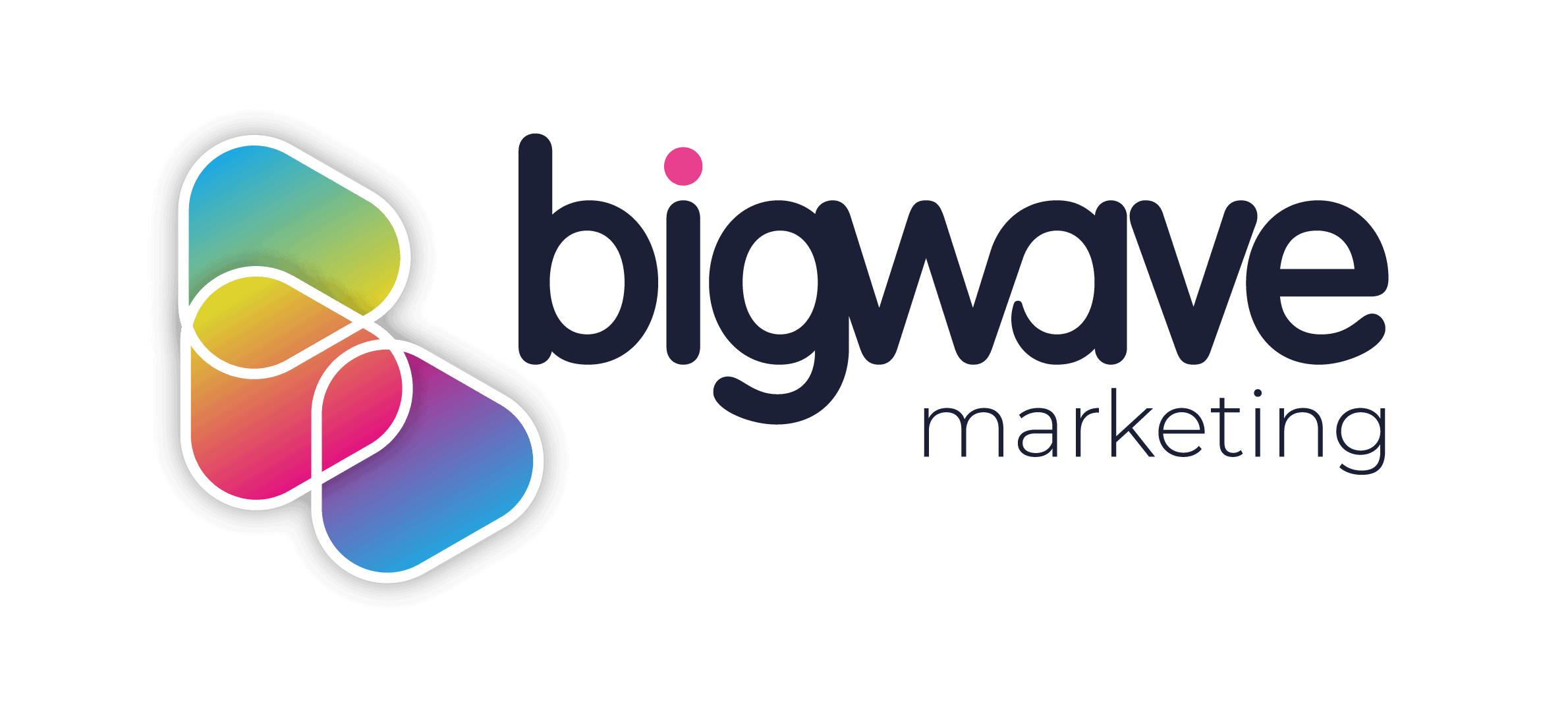Not long ago, if your website showed up near the top of Google, you could count on a steady stream of clicks and customers. Ranking first was the prize. It meant something. But those days? They’re behind us.
Google has changed! Subtly at first, but now drastically. The ten blue links are no longer the most prominent feature in search results for some queries. More search results now are visual, interactive, personalised, and increasingly influenced by AI overviews and soon (in the UK), AI Mode. You will spot videos, image carousels, location-based results, ‘People Also Ask’ dropdowns, and AI-generated answers that often appear before any website does.
This shift means one very important thing: being visible on Google is no longer just about ranking number one. It’s about showing up in the right format, at the right moment, and in the right place within the search results.
In this guide, we’ll explore how search is evolving, what features you need to care about, and what you can do – practically and realistically – to keep your business front and centre in 2025 and beyond.
What’s going on with Google’s search results?
Starting with the basics, the way Google presents information on its results pages (known as “SERPs” or Search Engine Results Pages) has undergone a complete transformation in recent years.
Gone are the days of ten blue links. Instead, today’s SERP mix in a whole host of features designed to answer users’ questions more quickly and directly. The downside? These features often mean fewer people click through to websites.
Let’s break down the main changes:
AI overviews: The new top of the page
You might have noticed these at the very top of search results. Google is summarising information directly in a short paragraph or bullet list. These are called AI Overviews (formerly known as Search Generative Experience, or SGE).
Google uses artificial intelligence to pull content from across the web and create a quick answer to your question. While this is handy for users, it creates a problem for businesses. Only a few sources get cited, and often, users don’t even scroll past that box. Furthermore, they keep people on Google’s page.
What does this mean for you? If your content is featured in these overviews, brilliant! You gain credibility and visibility. But if you’re not included, your chance of being seen drops significantly.
Zero-click searches: No click, no traffic?
Another big shift is the rise of zero-click searches. This is where Google answers the user’s query right on the page – no need to visit a website at all. You’ve likely seen this when you look up the weather, ask for a definition, or search for opening hours.
Features such as the local pack (maps pack), People Also Ask , and featured snippets are designed to keep users on Google’s page. While this creates a smoother experience for searchers, it often means that websites lose out on traffic.
More visuals: Images and videos are everywhere
Search results today are far more visual than they used to be. Google’s algorithm is now designed to surface image packs, video carousels, and even short videos (think YouTube Shorts or TikTok-style clips) for queries related to tutorials, products, reviews or trends.
This is particularly important for businesses selling physical products as people often want to see what they’re looking for and not just read about it.
So, ask yourself: Are you showing up in video or image results? If not, this could be a huge, missed opportunity.
Local searches (“near me” searches)
If your business serves a local area, this is good news – but only if you’re properly set up for local SEO. That means having a complete and accurate Google Business Profile, encouraging reviews, and using location-based keywords on your site.
Local search results have the Google Maps pack prominently featured at the top of the search results (in most cases). This feature attracts a significant number of clicks. Local is also more shielded from AI Overviews which don’t yet appear in this SERP type.
Google wants real experts: Introducing E.E.A.T. (again)
For content that impacts someone’s health, finances, or well-being (what Google calls “Your Money or Your Life”/YMYL topics) there’s a heavy emphasis on E.E.A.T.: Experience, Expertise, Authoritativeness and Trustworthiness.
In plain English? Google wants to know that you know what you’re talking about. You need to demonstrate real-world experience, back up your claims, and build trust through reviews, credentials and reputable content written with expertise.
AI Mode: Google’s new search experience is coming to the UK soon
Resembling ChatGPT or Perplexity, AI Mode is a new search experience that aims to understand more complex questions, and queries and arrange the information in a way that provides more information and context to the user. It is a full-page experience that might replace the ten blue links or the default “Search”/All experience we’ve had since the inception of Google. The full consequence of this mode is still unclear, at the moment, but some large US-based websites such as Hubspot have reported a large decrease in their blog traffic. This makes sense as this mode aims to target informational queries for the most part (guides, blogs, etc.).
The good news: searchers that are looking to buy a product or service will still need to visit your website, so, in the meantime, while we should expect a drop in our website visitors, the number and quality of transactions should be the same or higher. Assuming you appear in the AI mode reference links.
Google’s new AI Mode is already active in the US and will likely find it’s way to the UK very soon as Google seems to be rushing it along.
So, how do you make the most of all the features and content formats?
Knowing that search is more than just rankings, the key question becomes: where can my content appear to increase my visibility? There are a lot of opportunities depending on your type of business. Let’s look at the top features to aim at for most businesses and how your SEO and content strategy can change to get there.
1. Featured snippets: Grab the top answer spot
These are the boxed answers that appear above traditional results. They’re prime digital real estate. While these still exist in some search results, they are rapidly being replaced by the AI Overviews.
To give yourself a shot:
- Answer common questions clearly and briefly (think 40–60 words)
- Use bullet points or step-by-step formatting
- Focus on queries that start with “how”, “why”, or “what”
2. AI overviews: be the source, not the footnote
AI Overviews pull from trustworthy content sources. You want Google to consider you one of them.
To stand out:
- Keep your content accurate, useful and updated
- Write comprehensive guides that answer related questions in one place
- Use structured data (like FAQ schema) to help Google “read” your content properly
3. Video: explain it visually
Video is now essential – not optional.
Whether it’s a short tutorial, a product demo, or a customer Q&A, adding video to your content helps it appear in multiple formats.
Upload to YouTube (Google owns it) and:
- Write descriptive, keyword-rich titles
- Use chapters (timestamps) for longer content
- Add custom thumbnails that draw the eye
4. Local SEO: dominate nearby searches
This is where many small businesses can really shine.
Get started by:
- Setting up your Google Business Profile (and keeping it current)
- Using location-based keywords on your pages (e.g., “florist in Bath”)
- Encouraging reviews and responding to them politely
Remember, local searches often have high intent – people are ready to buy or book.
5. People also ask: answer follow-up questions
These boxes appear when Google senses someone might want to dig deeper. They’re a great chance to build visibility.
You can show up by:
- Adding FAQ sections to your pages
- Using natural, question-based headings
- Writing in a friendly, conversational tone
6. Reddit results: real voices are rising
Here’s a surprising one. Google recently signed a 60 million dollars deal to access Reddit to train their AI models. Google has also shown a preference to Reddit in search results. That means answers from forums, discussions, and real-life experiences are showing up more often.
What can you do? Listen in. Use Reddit to understand what questions people are asking in your industry. Then, create content that responds with clarity, honesty and real-life relevance. You might even engage directly – carefully and authentically – to share your experience and expertise.
What should you do next?
Being visible on Google is no longer just about ranking. It’s about showing up in the right formats – whether that’s a video snippet, a quick answer, a local pack, or an AI overview.
To keep up, you’ll want to:
- Create helpful, well-structured content that answers real questions
- Think beyond blogs – use video, visuals, FAQs and customer reviews
- Regularly update your site and stay in tune with what your audience is actually searching for
Search visibility in 2025 is about presence – not position. Make sure you’re turning up wherever your audience is looking.
Want help putting this into action?
We can help you audit your content and build a plan to make sure your business shows up across Google’s evolving features. Find out more about SEO services.

